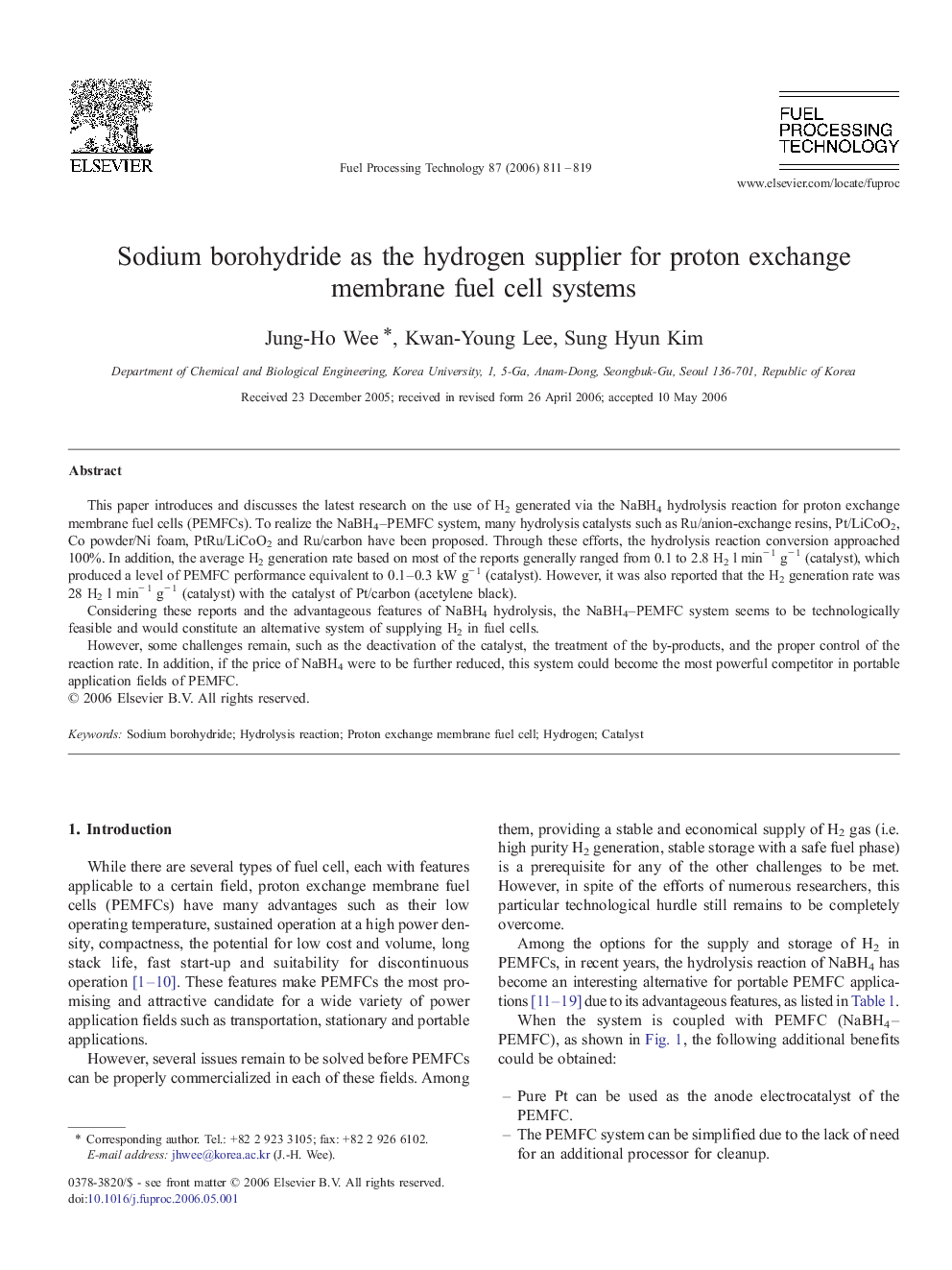| Article ID | Journal | Published Year | Pages | File Type |
|---|---|---|---|---|
| 211373 | Fuel Processing Technology | 2006 | 9 Pages |
This paper introduces and discusses the latest research on the use of H2 generated via the NaBH4 hydrolysis reaction for proton exchange membrane fuel cells (PEMFCs). To realize the NaBH4–PEMFC system, many hydrolysis catalysts such as Ru/anion-exchange resins, Pt/LiCoO2, Co powder/Ni foam, PtRu/LiCoO2 and Ru/carbon have been proposed. Through these efforts, the hydrolysis reaction conversion approached 100%. In addition, the average H2 generation rate based on most of the reports generally ranged from 0.1 to 2.8 H2 l min− 1 g− 1 (catalyst), which produced a level of PEMFC performance equivalent to 0.1–0.3 kW g− 1 (catalyst). However, it was also reported that the H2 generation rate was 28 H2 l min− 1 g− 1 (catalyst) with the catalyst of Pt/carbon (acetylene black).Considering these reports and the advantageous features of NaBH4 hydrolysis, the NaBH4–PEMFC system seems to be technologically feasible and would constitute an alternative system of supplying H2 in fuel cells.However, some challenges remain, such as the deactivation of the catalyst, the treatment of the by-products, and the proper control of the reaction rate. In addition, if the price of NaBH4 were to be further reduced, this system could become the most powerful competitor in portable application fields of PEMFC.
